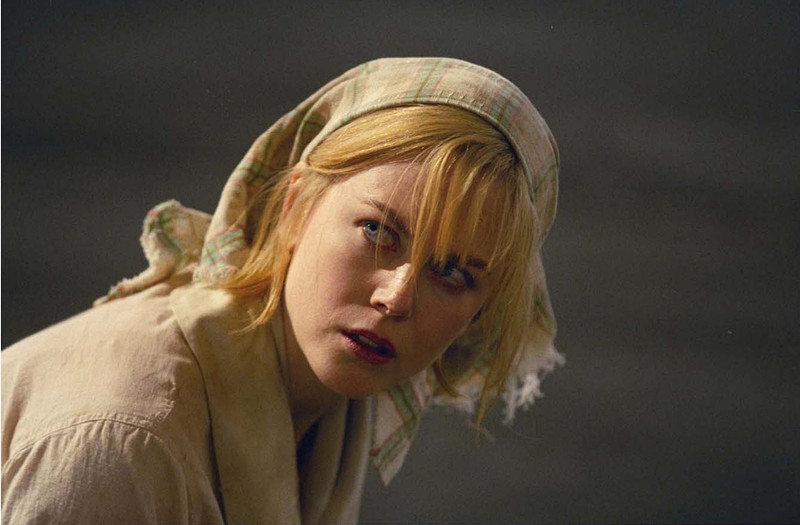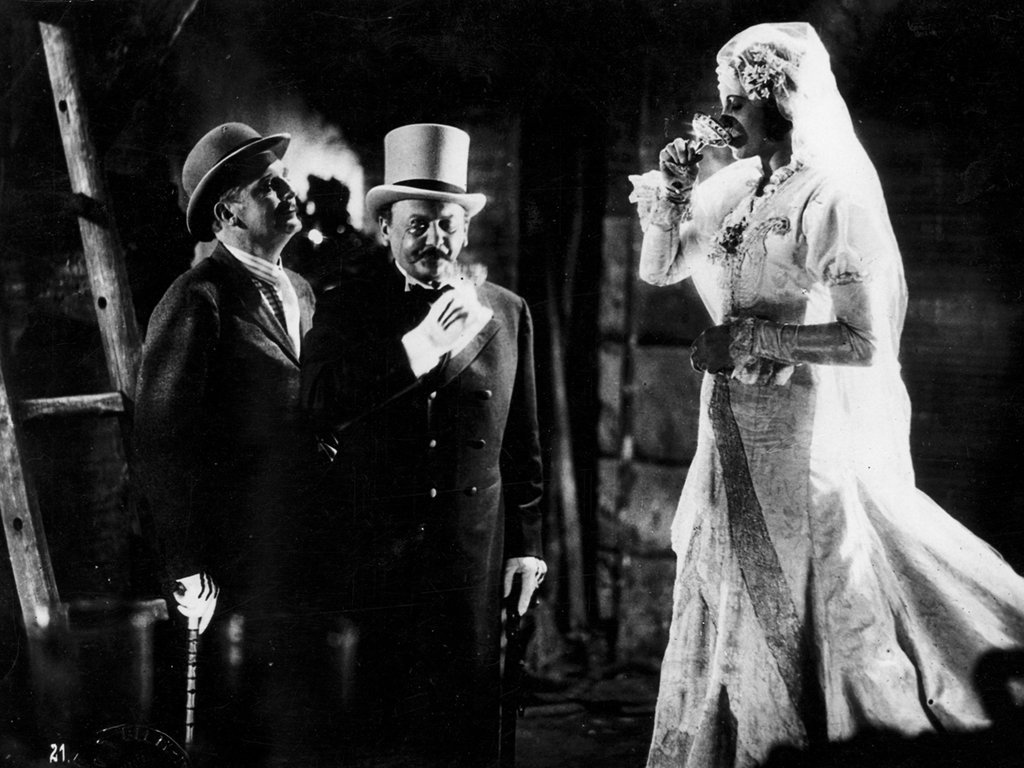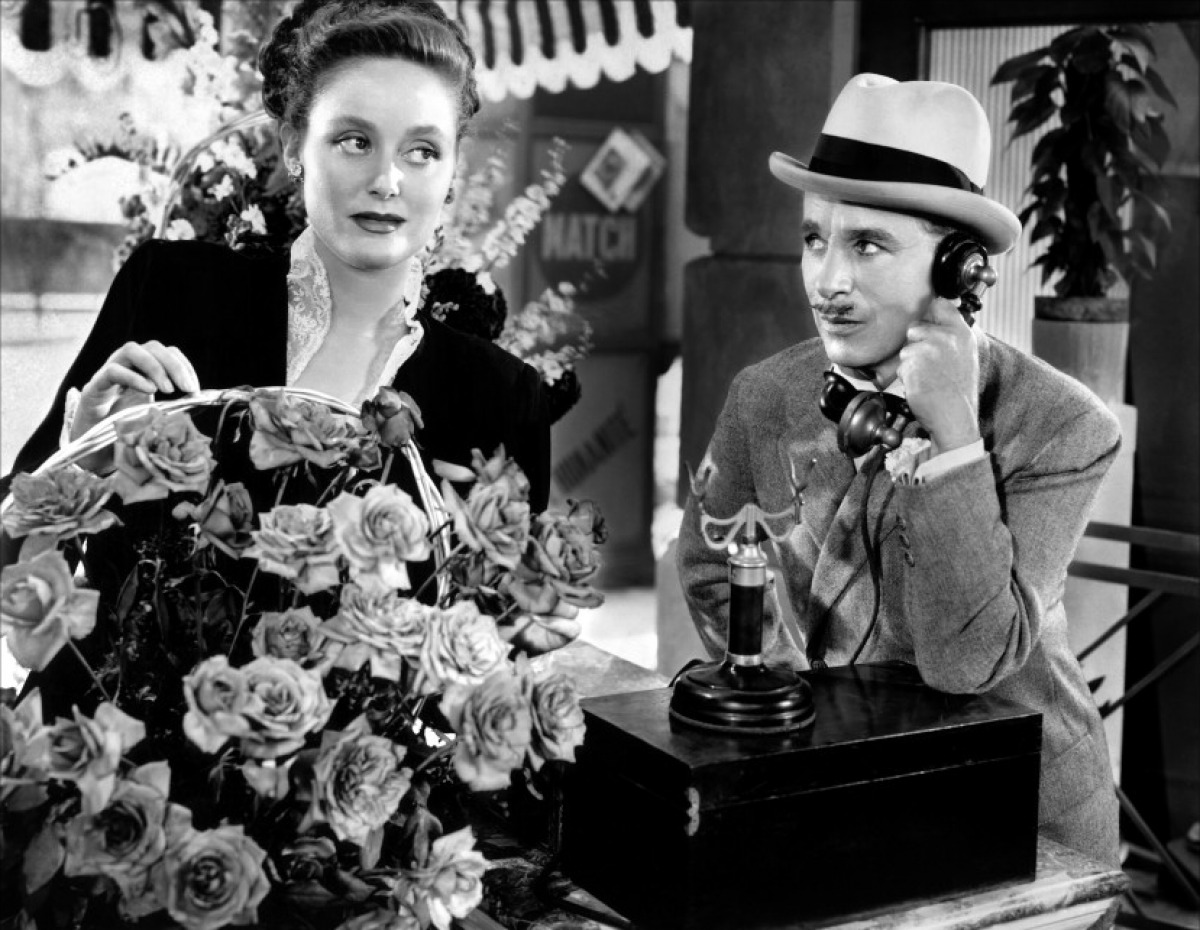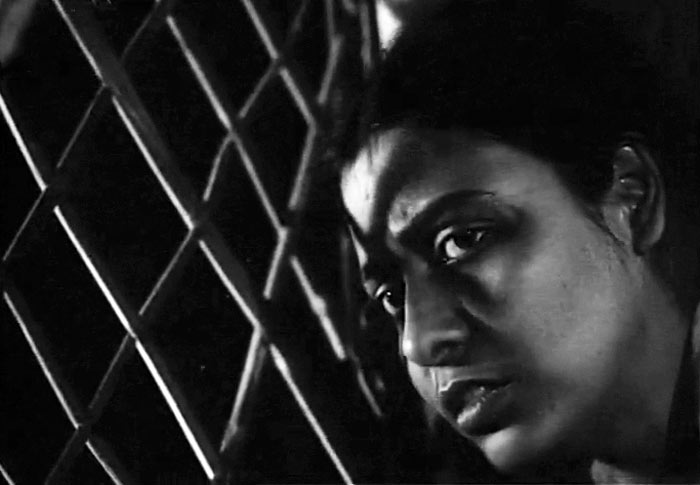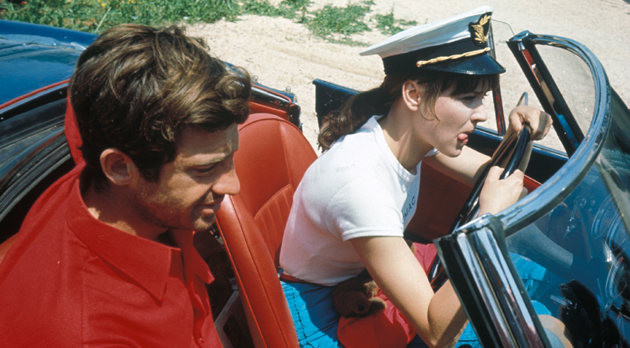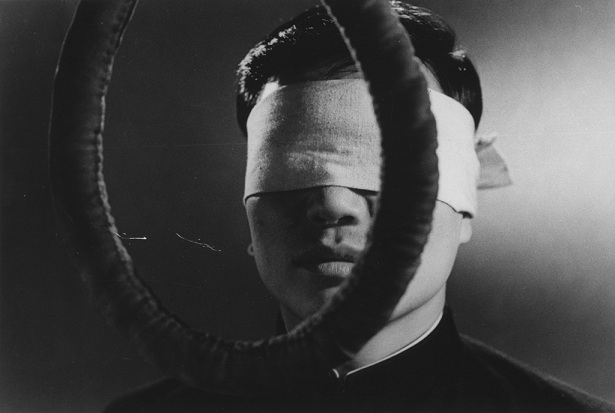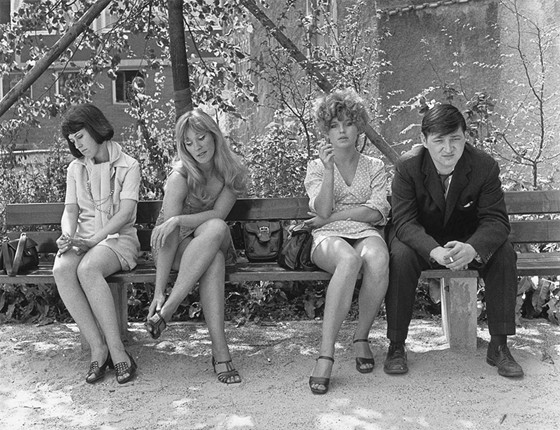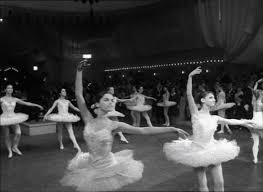Since the beginning of cinema, the theater has been a major influence on the medium. Cinematic staging is largely based on precepts from the theater. Though cinema developed its own language, a lot of traces of theater are still present. To point out the obvious, most acting techniques come directly from theater.
Perhaps in Hollywood cinema the major influence was the Stanislavski system. Stanislavski proposed a school of acting where the actor was expected to control every facet of his performance in order to mix theatrical emotions with real ones to create a truly dramatic performance. This style can be seen in Robert De Niro’s performance in Raging Bull, or in almost every Daniel Day-Lewis performance.
The literary counterpart of this was incarnated in the person of the German poet and writer Bertolt Brecht. Brecht proposed the “epic-theater”, where the thoughts were more important than emotion. For Brecht a play was completed outside the theater, in the reflections of the audience when the play is over. To achieve this he employed the verfremdungseffekt (distancing effect), a strategy which constantly reminded the audience that they were in a theater.
In Brechtian theory, if the spectator knows that what he is watching is fiction and is not driven by an emotional identification, he can complete the play in his mind. Brecht was also a Marxist and his main interest was to expose contradictions from the stage, and involve the audience. He never gave complete answers which would go against dialectical exercise.
The influence of these ideas became so prominent, that there are a number of examples of them in cinema. Some of his techniques became popular in modern cinema, though not necessarily with the same objectives Brecht had in mind. Addressing the audience by breaking the fourth-wall was one of Brecht’s revolutions, but now this is quite normal, and is not always related to distancing ideas. This 15 films listed are among the finest examples of Brecht’s lessons applied to film.
1. The 3 Penny Opera (G.W. Pabst, 1931)
Though the only film of the list with a screenplay signed by Bertolt Brecht himself, this film was strongly rejected by the author. Attending one of the first staged performances of The Three Penny Opera, Pabst was impressed by the cinematic potential of the play. After contacting Brecht and Kurt Weill, he prepared to take the play from stage to screen.
The only condition which Brecht made for the adaption was his right to control the script. Brecht was infamous for making major changes in his adaptations, and entered into a disagreement with Pabst when the director tried to insert his own ideas into the screenplay. The matter was never resolved and it ended in a trial ending with Brecht losing, leaving Pabst’s version legally valid.
The film concerns Mackie Messer (Mack The Knife in the English version, famously portrayed in Bobby Darin’s vocal from the show) a criminal killer and his misadventures. Mackie is protected by the authorities and seems almost untouchable until the King of Beggars plots to bring him down. This main plot point was where both Pabst and Brecht agree.
There are also touchpoints such as class distinctions represented in the film, making Mackie Messer an aspiring social climber, within the selection of musical numbers (cut to the half from the stage version in the film) and the final resolution. There is still a lot of Brechtian technique present in the film. In the musical films and plays of the time and later, there was always logic in the passage of dialogue to song in the subtlest possible way.
In Brecht’s work revealing fictitious devices always points out differences between dialogue and songs. This rule is respected in the movie, where every song is announced as an independent part of the film and doesn’t have a real narrative relevance.
The Brechtian way of acting is also present in the love declarations between Mackie (Rudolf Forster) and Polly (Carola Neher), showed in an emotionless way, far from the normal actions of couples in 30’s drama. Considering all the differences in between, the spirit of Brecht’s play and ideas remains intact in Pabst’s surprising adaptation.
2. Monsieur Verdoux (Charles Chaplin, 1947)
After six feature films where Charles Chaplin played his famous character The Tramp, he decided to take his biggest career gamble and portray a new character in a more “realistic” style, removing elements of the pantomime which made him famous. In Monsieur Verdoux Chaplin plays a victim of the Great Depression, a bank clerk who lost his job during the crisis. To support his wife and son he decides to enter the business of marrying and killing wealthy women.
In this film Chaplin not only decides to kill off his famous character,he proceeded in the opposite direction with this cynical and black-humorous film. This was very risky not only due to the popularity of The Tramp, but also because the film’s political slant demonstrated a totally anti-capitalist take on society.
Though the film was set in France, the target country of Chaplin’s attack was clear and the audience in United States didn’t react in a positive way. Chaplin was already under suspicion for Anti-American sentiments and for sympathy with Communist ideas. The year the film was released was the same year as the first of the McCarthy blacklists. Chaplin was in a terrible position when the film was released.
Four years later Chaplin would be expelled from the United States. This not a surprise considering the guests at Chaplin’ home during those years. One of the frequent visitors to his home was Bertolt Brecht. Brecht had pointed to Chaplin as one of the influences on the epic-theater theory. For Brecht the way that Chaplin moved was a way of providing though-provoking distance.
A few years later was Brecht the one who influenced Chaplin by making suggestions concerning the screenplay of Monsieur Verdoux. Brecht made the criticism of capitalism more intense and direct. Chaplin made use of the verfremdungseffekt several times in the film, having some characters react in unnatural ways to situations.
The climactic scene plays as a speech made directly from Chaplin to the audience. The audience is forced to distance itself from Monsieur Verdoux in order to reflect on what the filmmaker is trying to express. This is the Brechtian approach of every art-work.
3. The Cloud-Capped Star (Ritwik Ghatak, 1960)
The cinema of Ritwik Ghatak had grown in reputation in the last few years. Regarded as the second most famous Indian filmmaker after Satyajit Ray, Ghatak was praised by the critics of his time, and, especially, by Ray himself.
This film follows the lives of Neeta (Supriya Choudhury) and her family as Pakistan refugees in Calcutta. Neeta is constantly exploited by everyone around her, including her family. Tragedy comes upon her when her husband dies and she contracts tuberculosis. This tragic tale was the biggest success of Ghatak’s career.
Ghatak started his career in theater, where he directed and translated some of Brecht’s works. He conceived the idea of creating distance from the audience while he was directing his first plays. When he started making films, this affected his style directly. Thematically his films were indigenously Indian and held a deep interest in the effects of the partition of India in 1947. He created characters and themes linked directly to his country, while at the same time being heavily influenced by the German theater.
The most recognizable Brechtian influence in Ghatak works is in the mise-en-scène and the way he placed the characters. In several scenes in The Cloud-Capped Star the viewer can see a character talking directly to the camera while at the bottom of the frame another character is listening.
This unrealistic way of having characters speak to each other provokes an uncertain feeling in the audience, distancing between the viewer from Neeta. Becoming emotionally involved with a character was the anathema of the analysis in the Brechtian theory, so Ghatak is always forcing the viewer to create distance, in order to point out that one is watching a movie.
Even if the film ends in a tragic key, the audience has to question what was being watched. For Ghatak the more important effect was the emotion of the audience.
4. Pierrot Le Fou (Jean-Luc Godard, 1965)
Godard had been regarded by many critics as one of the directors who most vividly embodies Brechtian theories. Godard and the French New Wave made it impossible for audiences to ignore that they were watching a film. Actors address their dialogue directly to the audience, music is cued in the wrong places, jump cuts point up that someone was editing, there are random endings, and similar devices. Godard’s cinema always the stories he wants to tell, but is also about cinema itself.
Pierrot Le Fou is in Godard’s own words is about “A guy who leaves his family to follow a girl much younger than he is. She is in cahoots with slightly shady people and it leads to a series of adventures.” We can see the outcome of that in the film, along with a lot of random events. The movie jumps from elements of the musical, to gangster films, then melodrama without any kind of internal logic.
Any of Godard’s 60’s films could be on this list, but is in Pierrot Le Fou where the elements of verfremdungseffekt are most present. The way Godard uses incidental music to emphasize dramatic moments and cutting in the middle of tense parts becomes a method of shocking the audience, in order to make the viewer feel strange concerning familiar cinema tropes.
The famous party scene where Ferdinand (Jean-Paul Belmondo) talks with Samuel Fuller (Samuel Fuller) during which the screen changes color dramatically, rather than having an aesthetic effect, leaves the viewer wondering what kind of movie one is watching. All the questions Brecht wished to raise with his plays are taken to the extreme in Godard’s film.
5. Death by Hanging (Nagisa Oshima, 1968)
Oshima was always an outsider in the traditional Japanese Cinema community. Not interested in the samurai-epics or in the family drama genres which were common at the time, and in that place he chose to concentrate on subjects outside of society. His concentration on criminals, whores, and other marginal and sexually exploited people made him one of the most innovative and political directors in his country’s cinema.
A declared socialist, Oshima pointed up some of the legal contradictions concerning the death penalty in Japan. A Korean criminal is awaiting execution in the death chamber. Unexpectedly, he survives and wakes up with severe amnesia. The executors try different ways to make him recover his memory,in order to be able to execute him again.
The Brechtian elements can be seen clearly. The theme of the movie, which deals with justice, works to exposition contradictions but doesn’t draw a clear conclusion. As in Brecht, Oshima confronts the audience with the issue and forces the viewer to come with a conclusion after the film ends. This is not inferred. The challenge is explicit and direct.
Oshima use intertitles to introduce each chapter of the movie. This intertitles tell the viewer explicitly what will be seen. There are also intertitles functioning as both introduction and conclusion. These texts are addressed directly to the audience, positing questions about the death penalty.
As the movie unreels, the police involved in the reenactments start to confuse theatre and reality, also confusing and confounding the viewer. Oshima found in Brecht the means to express his political themes within the formal aspects of the film.
6. Katzelmacher (Rainer Werner Fassbinder, 1969)
Some of Fassbinder’s biographers have said that Fassbinder shaped his filmmaking style using Brecht’s ideas. It is easy to find parallels. Both artists used their work to express political ideas and as a way to expose contradictions and start discussions. Both sought to create a situation in which the viewer will be left pondering ideas when the play or the movie is over.
It isn’t just their political approaches which makes the pair similar figures. Brecht had a very active sexual life, frequently having multiple partners at the same time. He experimented with men sexually on a constant basis. Fassbinder, as biographies relate, was similar. It is no surprise to see how much admiration Fassbinder had for Brecht and his techniques.
Katzelmacher, Fassbinder’s second feature film,follows a group of friends and their trivial life situations. They play cards, sit in front of houses, hang-out in bars, and have sex. One day Jorgos (Rainer Werner Fassbinder), a Greek immigrant, arrives in town. The friends can’t stand Jorgos presence, and they start having serious of problems with him.
If one of the prerequisites of the epic-theatre was to make the actors perform in an emotionless way, then Fassbinder took this idea to the extreme in Katzelmacher.
In the movie the characters both hang-out with each other and have intimate relationships, but can’t look each other in the eye. The style of the film makes everything looks static and cold, not showing any sign of emotion.
Fassbinder references Brechtian technique to show a hopeless German youth. These youths lack purpose and can only find some vitality in racism and xenophobia. Everything goes wrong in Katzelmacher, and the viewer knows this within the opening minutes of the film. The static camera and the static and lifeless characters give off an uneasy feeling only partially calmed through violence.
7. Artist in the Circus Dome: Clueless (Alexander Kluge, 1969)
Though Godard and Oshima are regarded as prime directors of Brechtian principals, it is no surprise to find the biggest imprint of Brecht’s work on the New German Cinema. Alexander Kluge started his career a bit before than the main figures of the movement, but exhibited many of the elements which characterize the movement.
Kluge’s films showed a cerebral approach new to cinema. In this regard ideas within the film were more important than being moved by the film. Kluge pointed out in a recent interview that an artist is incapable of making proper decisions and can only analyze, counter-analyze, repeat and make comments of previous works and theories. He takes this as a justification to use Brecht’s theories as main material for his work.
The title of the film indicates strangeness and a cold approach. Kluge was also a philosopher and writer, and makes clear from the beginning that the viewer is not in experiencing a traditional narrative film. Artist in the Circus Dome: Clueless works more as a collage than a film, concentrating on the efforts of Leni Peickert (Hannelore Hoger) to build a new kind of cerebral circus.
The film jumps randomly from circus scenes to documentary-like scenes where Peickert tries to raise money for her project. Working as a metaphor for Germany itself, the film employs many techniques which makes it impossible to have a normal emotional approach towards Leni.
The use of intertitles in Kluge’s cinema shows a Brechtian approach by creating a cinema code in an unusual way. The many intertitles of the film instead of give narrative elements, turning into a repetitive text which describes onscreen images. The film uses voice-over in the same way, turning familiar narrative elements into strange distancing elements.
